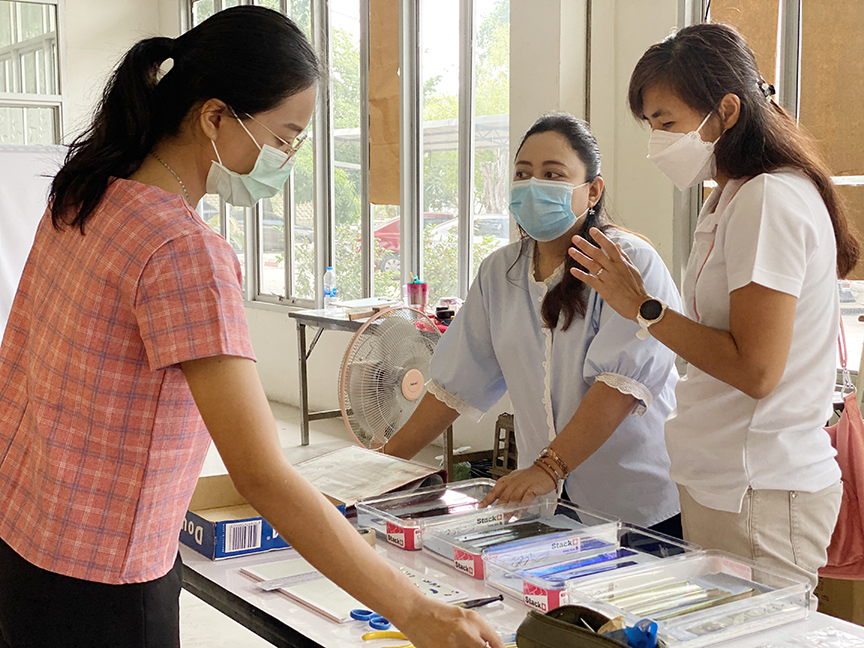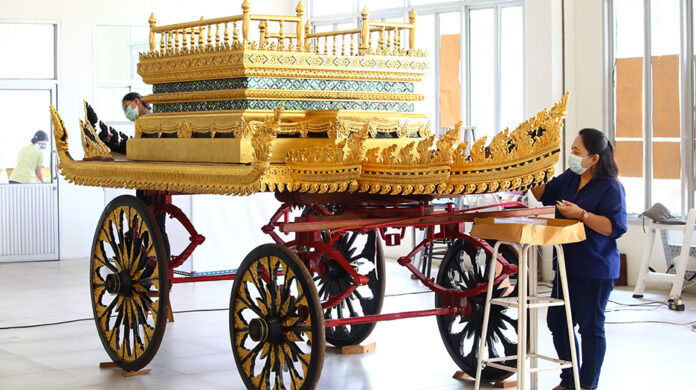
NAKHON RATCHASIMA – Scientists from the Synchrotron Light Research Institute under the Ministry of Higher Education, Science, Research and Innovation have been involved in the restoration of the royal carriage used in the funeral processions of Thai monarchs and members of the royal family.
During the restoration, synchrotron technology was used to analyse and reproduce the old glass panes. They were then sent to the Office of Traditional Arts for repair and restoration before being displayed at the National Museum in Bangkok.
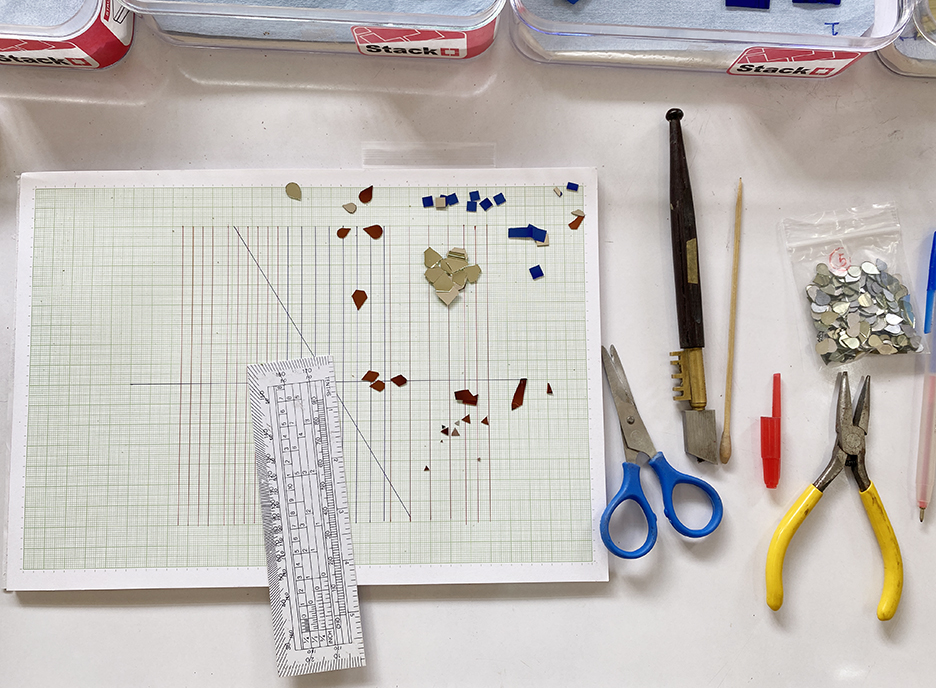
Dr. Wantana Klaisuban, assistant director of academic affairs and research at the Synchrotron Light Research Institute, explained that this project is an extension of an earlier research project on the glass panels of Wat Phra Si Rattana Satsadaram or Wat Phra Kaeo.
The earlier project, which spanned several years, successfully provided knowledge and formulas for the production of all four colors of ancient glass. With this knowledge, the Institute was approached by the Office of Traditional Arts to collaborate in the restoration of the royal chariot.
The restoration aims to preserve the original features of the car, which means that the original glass panes are not removed. The remaining original panes are preserved, while the missing panes are replaced with new panes that match the originals in color and thickness. These new panels must also be compatible with the natural rubber glue used in the traditional wood carving technique.
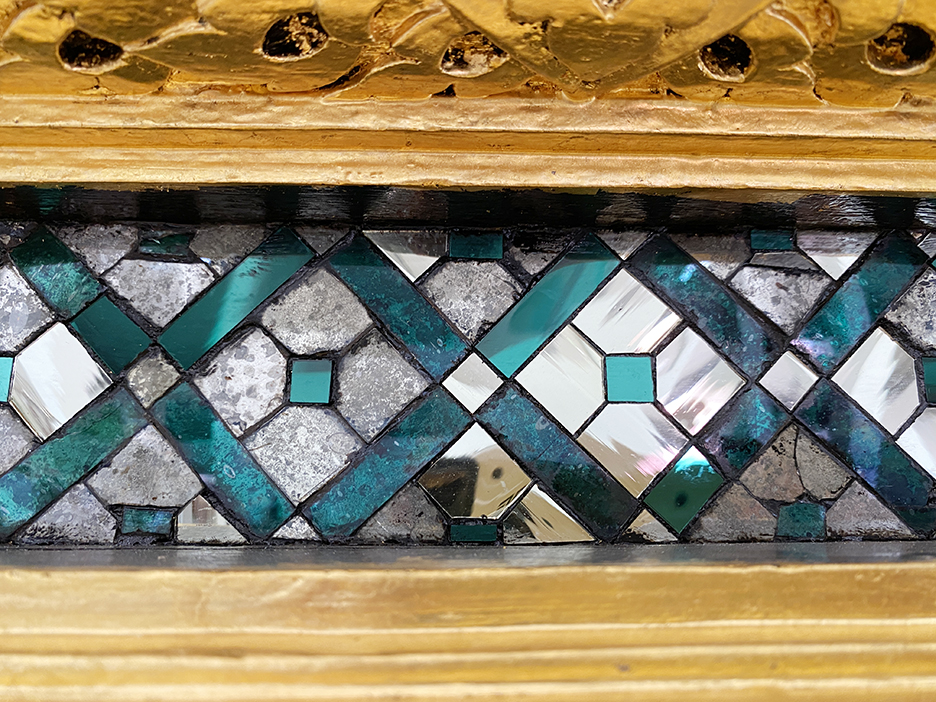
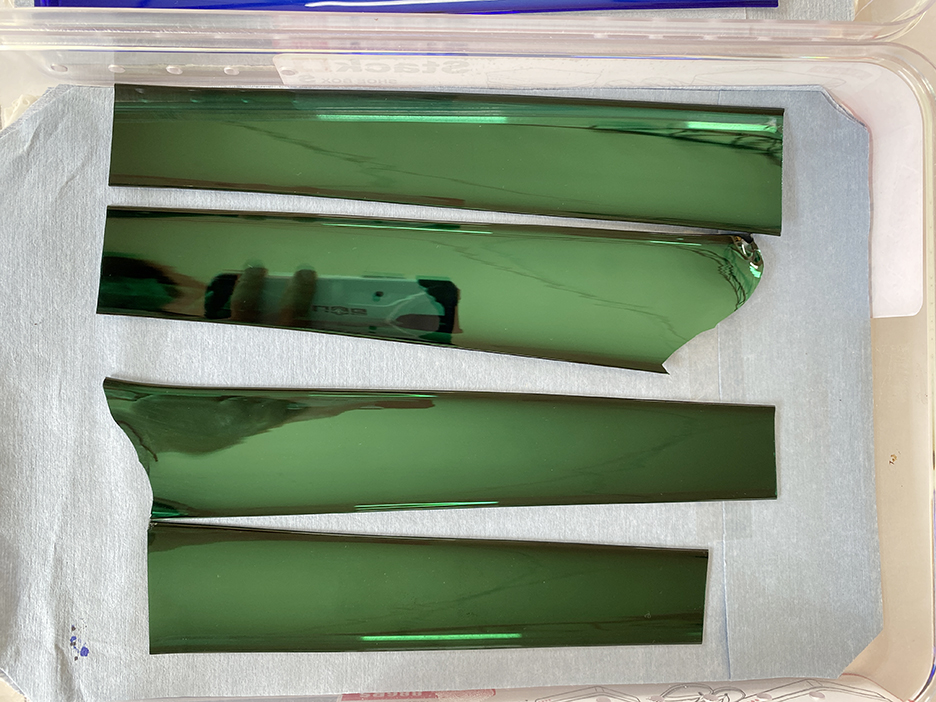
“The synchrotron glass has all the required properties. We can adjust the color and formulate the glass composition to meet the specific requirements. This is why we took on this project. We spent about a year adjusting the color of the glass based on the original formulas. The green and blue colors of the Royal Chariot have different tones compared to the glass from Wat Phra Kaeo, so we had to fine-tune the formulas to ensure that the new panels would match the originals. The results are now visible for all to see.”
Dr. Wantana explained that the Synchrotron Light Research Institute was solely responsible for the production of the glass plates. The institute received several colors of glass for analysis, including green with a hint of blue, off-white, blue, and red-orange.
“The red-orange color is very complex because it is not the color that was discovered at the Wat Phra Kaeo project,” Dr. Wantana said. “It is not created by a single element, but by a combination of two to three elements. We used our knowledge of old red and yellow glass to develop a new formula for this color. The new glass panels were then sent to the Office of Traditional Arts to be used in the restoration.”
